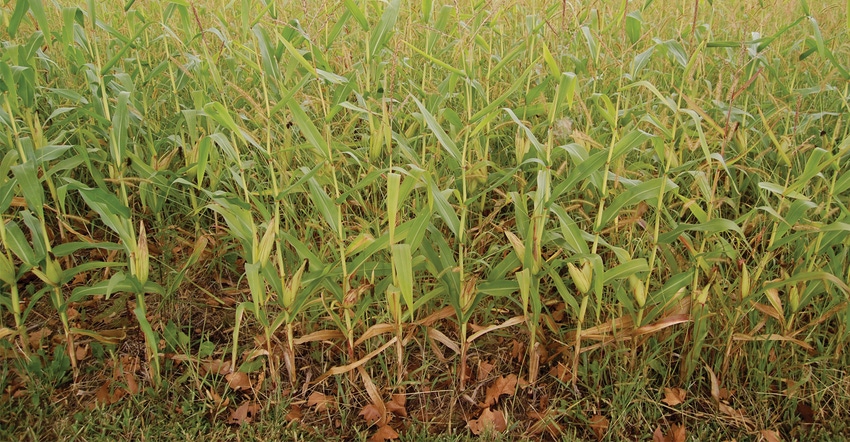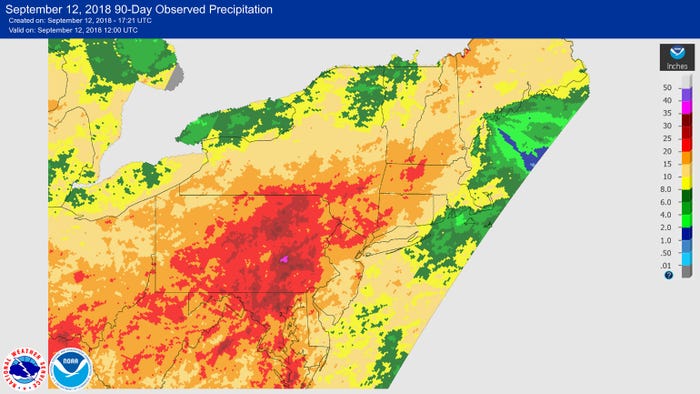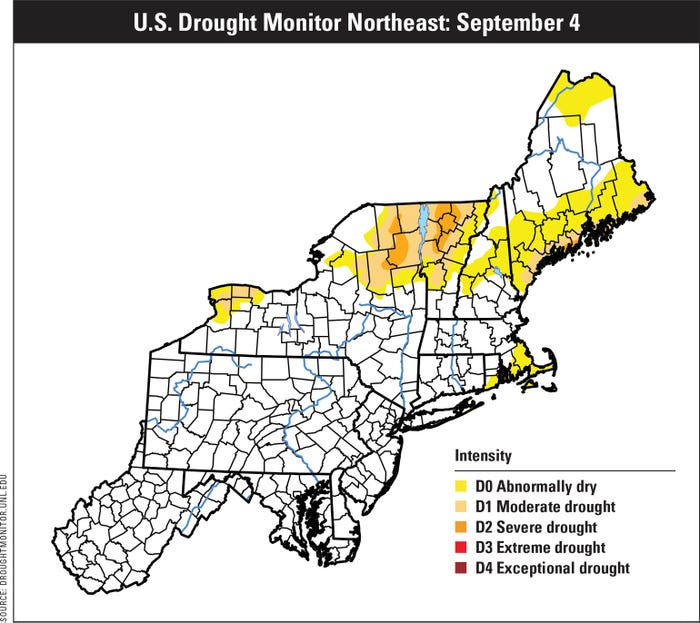
It’s been raining like crazy here in the Northeast.
According to the National Weather Service, some areas of Pennsylvania have gotten nearly 30 inches of rain over the past 90 days. Take a look at the maps of observed precipitation and normal precipitation and you’ll see how much more rain the region has gotten this summer.
In some areas farmers are getting by OK, but in New Jersey, the timing of the rains has been terrible, leading to many losses. An ominous introduction to the state’s latest Crop Progress Report tells the story:
"Crop loss from previous flooding, heat and insecticide resistance is obvious, and yields and profits are expected to be down. There are concerns that many farmers have no crop insurance to help with these problems."
The report says that the state FSA office has gotten two emergency designation requests for more than 30% losses of crops in Atlantic, Cumberland, Gloucester and Salem counties, mostly due to excessive rain. Cabbage, kale and Romaine lettuce are too wet, the report states, and are unmarketable for 20 producers.
 LOTS OF RAIN: The observed precipitation totals from the National Weather Service for the past 90 days.
LOTS OF RAIN: The observed precipitation totals from the National Weather Service for the past 90 days.

Corn damage from excessive heat and drought earlier in the season has affected more than 450 farmers in Gloucester and Salem counties, according to the report. Overall, 34% of the state’s corn crop is either in "poor" or "very poor" condition.
Better in Pennsylvania, but wet
Next door in Pennsylvania, crops are in better shape, although it’s been almost historically wet, particularly in the south-central part of the state. The Crop Progress Report shows 14% of the corn crop is mature with 38% of the silage harvest complete.
Soybeans are 91% blooming, which is about average.
Apples are a little behind with 32% of the crop harvested, behind the five-year average of 44%. Tobacco and barley are on schedule, according to the report.
Most of the corn and soybeans are either in "good" or "excellent" condition. Twenty-one percent of the corn is in "fair" condition while 25% of soybeans are in also in fair condition.
 NORMAL RAINFALL: Normal precipitation for the past 90 days.
NORMAL RAINFALL: Normal precipitation for the past 90 days.

Corn struggles in Maryland and Delaware
In Maryland, corn is looking a little worse with 51% in fair condition. The average corn height is 93 inches with 18% of the crop mature.
Soybeans are 92% blooming, right around normal; 76% of soybeans are setting pods, behind the five-year average of 91%; and 56% of soybeans are fully podded, which is about normal.
In Delaware, 22% of corn is in poor condition while 36% is fair and 26% is in good condition. The average corn height is 99 inches.
Fifteen percent of soybeans are in poor condition while 38% are in fair condition and 29% are in good condition.
North Country drought worsens
Drought conditions continue to persist in northern New York and Vermont, and in areas around Buffalo, N.Y. Pockets of "severe" drought have popped up in areas of more widespread "moderate" drought.
Most of the corn is either in the dough or dented stage. Oats and barley for grain are also on schedule.
When it comes to soybeans, 96% of the crop is blooming and 94% of soybeans are setting pods.

Farmers are starting to plant winter wheat with 6% of the crop planted.
Apples, of which the state is the second largest producer in the country, are 33% harvested, which is ahead of schedule. Sixty-five percent of peaches have been harvested.
About the Author(s)
You May Also Like






